

Guided Nature and Penguin Tour
Granite Island is home to a small colony of wild Little Penguins, who return home from their day in the ocean at dusk. Granite Island Nature Tours are the best way to see Little Penguins in their natural habitat. But it’s not only Little Penguins you see, with all the Island’s natural wildlife to discover after dark.
Granite Island is home to a small colony of rare, wild Little Penguins.
Twilight tours also provide a chance to spot Granite Island’s Little Penguins as they return from the ocean at sunset. Visiting the island at dusk is ONLY available on a guided tour to ensure protection of the wild penguin colony.
For more information, or to contact Oceanic Victor, go to www.oceanicvictor.com.au
FEATURED TOURS & ATTRACTIONS
Find out more about the top tours and attractions in south australia.
We’ve put all our touring and sightseeing recommendations below to point you in the right direction. Create your own holiday itinerary in Adelaide and around South Australia.

Tours South Australia - Touring & Sightseeing

About Tours SA

Adelaide Central Markets

Adelaide Oval

Touring the Famous Barossa Valley

The Beautiful City of Adelaide

Day Tours from Adelaide

Festivals, Celebrations and Events

Great Ocean Road and Beyond

Interstate Tours to Adelaide

The Best of Kangaroo Island's Tours and Attractions

See Adelaide & Beyond Day Tours and Charters

Special Adventures in South Australia

Taste the Barossa

Touring Adelaide on a Budget

South Australia: The Wine State
Contact tours south australia.
If you need more information about South Australian Tours and Sightseeing call us or fill out the form below.
08 8357 1594
Your browser is a-n-c-i-e-n-t! Upgrade to a different browser or install Google Chrome Frame to experience this site.
There are currently no items in your cart.
- Share Facebook Pinterest Twitter Linked In
- Currency AUD USD GBP EUR CAD NZD SGD HKD SEK NOK DKK JPY
Guided Nature & Penguin Tour
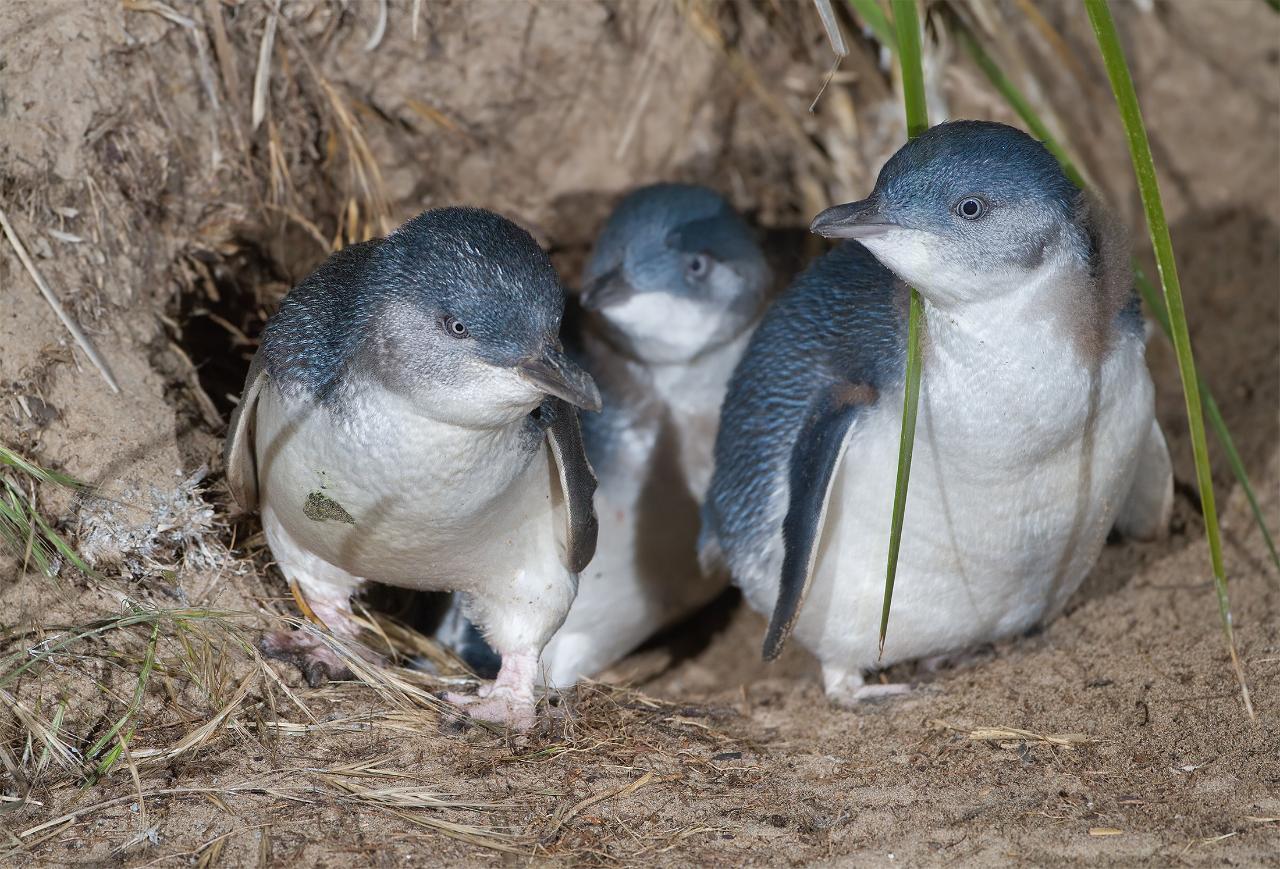
- Duration: 90 Minutes
- Location : Victor Harbor, South Australia
- Product code: PT
- Tours start just before dusk and last 1.5 - 2hrs
- Child (4-15 y.o) Infant (0-3 y.o)
We cannot guarantee the locations and the number of penguins that will be seen during tours as they are wild animals. Please note that during the cooler months or change of season, sightings can vary between 2 to 13 penguins.
*All Penguin tours meet on Granite Island in an allocated area near the four tall pine trees visible from the causeway. There is a penguin meeting sign and your tour guide will be wearing a high-visibility top. Please allow at least 15 minutes to cross the causeway (jetty).
View our booking terms, conditions and cancellation policy .
Start Booking Now
Please enable cookies in your browser to place a booking how do I enable cookies?
Enter Number of Participants *
Choose a date *, choose a time *.

Booking Software by Rezdy.com | Agent login
- Find a Park
Granite Island Recreation Park
More information.
Click the button below to view more information.
Take a short stroll or horse tram ride over the causeway that connects the mainland at Victor Harbor to Granite Island Recreation Park.
The island is characterised by huge granite boulders tinged with orange lichen, with the sound of waves crashing against rocky shores a stirring soundtrack to your visit.
Enjoy the coastal scenery and discover the island’s interesting history along the Kaiki Walk or go fishing from the jetty, or causeway (no fishing from breakwater). You may even spot a southern right whale between June and October.
Opening hours
Open daily.
Access to Granite Island is via the Victor Harbor to Granite Island Causeway. Please be aware that the causeway is exposed and offers no shelter during the crossing for pedestrians.
During severe weather events access to the causeway may be restricted or closed. When the Bureau of Meteorology forecasts ‘ strong winds’ for Victor Harbor, the Victor Harbor Horse Drawn Tram will not be operating. If you’re relying on the horse-drawn tram to access Granite Island on a windy day, please contact the Victor Harbor Horse Drawn Tram Office on (08) 8551 0720 to check if the trams are operating. During storm events the causeway will also close to pedestrians.
Closures and safety
This park is closed on days of Catastrophic Fire Danger and may also be closed on days of Extreme Fire Danger.
You can determine the current fire danger rating by checking the Fire Ban District map on the CFS website.
Check the CFS website or call the CFS Bushfire Information Hotline 1800 362 361 for:
- Information on fire bans and current fire conditions
- Current CFS warnings and incidents
- Information on what to do in the event of a fire .
Listen to your local area radio station for the latest updates and information on fire safety.
Contact details
Visitor information, bookings and park management: .
Victor Harbor National Parks and Wildlife Service Office Phone: (+61) 7133 7300 Email: DEW .VictorHarborOffice@sa.gov.au
Emergency contacts:
Medical, fire (including bushfire) and police emergency situations Phone: Triple Zero (000)
Police Assistance Phone: 131 444 for non-urgent police assistance
National Parks and Wildlife Service SA – Emergency After Hours Duty Officer (voice messages only, text messages are unavailable to be received ) Phone: 0427 556 676
Injured wildlife:
Within the park Please contact Victor Harbor National Parks and Wildlife Service Office on (+61) 7133 7300 or the after-hours duty officer on 0427 556 676 (outside of business hours).
Outside of the park Please contact a local wildlife rescue group
Marine mammals If you find a sick or stranded marine mammal (including whales, seals, sea lions and dolphins), please contact Victor Harbor National Parks and Wildlife Service Office on (+61) 7133 7300 or the after-hours duty officer on 0427 556 676 (outside of business hours)
When to visit
June to October is the perfect time to visit for whale watching activities. Southern right whales visit Encounter Bay each winter, when they find the local waters to be warmer than their summering grounds in the sub-Antarctic.
Warmer months are the best time for walking, swimming and fishing.
Getting there
Granite Island Recreation Park is located off the coast of Victor Harbor, approximately 100km south of Adelaide.
Accessibility
Facilities.
There is council owned accessible parking located at the end of the Granite Island causeway in victor harbour. The privately run horse drawn tram can accommodate a manual wheelchair or book a peninsula taxi to cross to Granite Island.
There is an accessible (right hand) toilet located on the island.
See and do
Check out Push Adventures — Views for miles from Granite Island blog for accessible trail descriptions and photos.
Assistance dogs
Assistance dogs are permitted in most public places and are therefore welcome in South Australia’s parks and reserves. Assistance dogs must be appropriately restrained on a lead and remain under your effective control at all times while in a park or reserve.
As per the dogs in parks and reserves policy, if the dog is not an accredited assistance dog, they must be trained to assist a person with a disability to alleviate that disability and meet standards of hygiene and behaviour appropriate for a dog in a public place. However, refusal may be given if the person with the disability is unable to produce evidence the dog is an assistance dog with the appropriate training.
Before taking your assistance dog into a park that does not normally allow dogs, it is highly recommended that you contact us so we can provide you with the latest information on any potential hazards within specific parks that may affect your dog. Please contact the park via the contact details provided under the contact tab or contact the visitor service centre via email or on Facebook .
Pets not allowed
Dogs are not permitted in this park.
Discover which parks you can walk your dog in on our find a park tool or read 12 dog-friendly walks in Adelaide Parks by Good Living for inspiration.
The Granite Island Recreation Park café operates 7 days per week.
The park also offers picnic areas and toilets (disabled available).
Useful information
- Explore what other nature and outdoor activities are available in this area on the South Australia Tourism website.
- Mobile phone coverage is good in most areas of the park.
- Horse Drawn Tram
- Parks management plans
- SA Marine Parks
- Important: Collection of firewood within National Parks is prohibited. Dead wood plays a vital role in providing shelter for animals and adding nutrients to the soil.
Plants and animals
Flora and fauna species lists.
To download flora (plants) and fauna (animals) species lists for this park, use the ‘ Create Simple Species List’ tab under ‘ Flora Tools’ or ‘ Fauna Tools’ in NatureMaps .
Pests and diseases
Phytophthora (fy-TOFF-thora), otherwise known as root-rot fungus, is killing our native plants and threatens the survival of animals depending on plants for food and shelter.
This introduced fungus can be found in plant roots, soil and water. Help stop the spread by using hygiene stations, staying on tracks and trails and by complying with all Phytophthora management signs.
- Phytophthora brochure
Traditional owners
Aboriginal peoples have occupied, enjoyed and managed the lands and waters of this State for thousands of generations. For Aboriginal first nations, creation ancestors laid down the laws of the Country and bestowed a range of customary rights and obligations to the many Aboriginal Nations across our state.
There are many places across the State that have great spiritual significance to Aboriginal first nations. At some of these places Aboriginal cultural protocols, such as restricted access, are promoted and visitors are asked to respect the wishes of Traditional Owners.
In places where protocols are not promoted visitors are asked to show respect by not touching or removing anything, and make sure you take all your rubbish with you when you leave.
Aboriginal peoples continue to play an active role in caring for their Country, including in parks across South Australia.
- DEW Park management
- DEW Aboriginal partnerships
Granite Island was once connected to the mainland. It has survived the force of the ocean while the land surrounding it has eroded away. Interpretive signs along the way reveal the origin of these rocks were formed 10km below the earth’s surface some 480 million years ago.
Rangers recommend
We have picked the brains of our park rangers to find out what they would recommend you see and do whilst visiting this park.
- Enjoy a whimsical trip back in time and catch the unique horse drawn tram across the causeway to the island.
- Enjoy the views of the wild southern ocean at it crashes into the boulders surrounding the island on a southerly wind.
- Explore the Kaiki Trail and check out the amazing formation of Umbrella Rock.
- Go bird watching and see how many different varieties of birds you can spot. Friends of Granite Island Wildlife Discovery have put together this guide to help you along the way.
Bushwalking
Bushwalking is a fantastic way to connect with nature, keep fit and spend time with family and friends.
South Australia’s national parks feature a range of trails that let you experience a diversity of landscapes. Our trails cater for all levels of fitness and adventure and our classification system makes it easy to select an experience suitable for you.
- Walk, hike or trek — what’s the difference?
- Bushwalking safety
Grade 1 — No bushwalking experience required, suitable for wheelchair users who have someone to assist them
Victor harbor to granite island causeway (20 mins one-way, 650 metres).
Navigate this trail on Google Street View
Take a short stroll or horse tram ride over the wooden causeway that connects the mainland at Victor Harbor to Granite Island Recreation Park.
Grade 3 — Suitable for most ages and fitness levels
Kaiki walk (1 hour, 2.9km loop).
The trail is a great way for people, including families with children and strollers, to discover the island. The trailhead is on the island, just after the Victor Harbor to Granite Island Causeway reaches the island. Discover more about the wildlife, geology and history of the island with the interpretive signs along the trail. Explore granite boulders including Umbrella Rock, and take in the views of Encounter Bay, the Bluff, islands and whales in winter.
Granite Island Recreation Park Café
The Granite Island Recreation Park café is open daily from 9:00am – 5:00pm. For further information phone (08) 8429 9656.
Seating is available within the café with a range of locally sourced pastries, sandwiches and snacks on offer. Enjoy a freshly roasted coffee and soak up the stunning oceans views as you look across the Victor Harbor foreshore.
On a warm day the grass area in front of the café is perfect for kids, with dolphins and sea lions often making an appearance in the distance.
Whale watching
Take your binoculars, cast your eyes out to sea and you may be lucky enough to spot a southern right whale between May and October.
The southern right whales’ unique affinity for coastal inshore waters makes them the perfect species for land-based whale watching, you can easily spend many hours viewing their playful antics. Sometimes the whales approach as close as 100m from shore, providing a bird’s eye view of their immense size and rotund, 18m body.
There has been 29 different types of whales recorded in South Australia. The most common are the southern right whale, humpback whale, sperm whale, blue whale and orca whale (killer whale). Of these you are most likely to spot a southern right whale along the South Australian coast. The vast majority of southern right whales are black in colour with distinctive white patterns on their heads that are calluses formed by small crustaceans known as ‘ whale lice’. The patterns are visible at birth and are unique to each whale allowing researchers to identify individual whales.
Little penguins
The little penguin.
(Also known as fairy penguin, blue penguin or little blue penguin)
The Little Penguin is the world’s smallest penguin species and is well known to most visitors to Australia’s southern coastline. It stands about 35 cm tall and weighs about 1.2kg. By comparison the Emperor Penguin, which is the largest penguin in the world, stands over 110 cm and can weigh 30kg.
The Little Penguin is found only in Australia and New Zealand and is the only penguin to breed in Australia. Large numbers can occur where suitable conditions are present. Little penguins favour rocky shorelines, just like Granite Island, which provide suitable breeding sites. The availability of feeding grounds also determines the size and success of a colony.
The number of Little Penguins on Granite Island has declined from 1600 penguins in 2001 to 20 adult penguins counted in the last census in October 2021. Despite, the low number the colony has increased from 16 penguins in 2020. The active burrows on the island are monitored with the use of remote cameras.
The definitive cause of this decline is still unclear, although a 2007 PIRSA study identified a number of factors including: changes in the marine environment, predation pressure, and rat predation on chicks.
Study is ongoing on the island and a rat baiting program and measures to prevent foxes accessing the island are currently in place to protect the eggs and young chicks from predation.
Little Penguins lay 2 eggs per clutch and incubate them for approximately 36 days. Chicks fledge when they are typically 59 days post hatching. Chicks are guarded by at least one adult for around 3 weeks following hatching, alternating foraging between the two adult birds. After 3 weeks both parents leave the chicks to forage for food.
- For further interesting information please see our Little penguins fact sheet
Little Penguins forage for food during the day and will return to their burrows during the early morning and late evening. Little Penguins are highly sensitive to disturbances from people and animals, this can cause them to abandon their breeding activities and burrows and impact their survival. Please adhere to the following guidelines to protect this vulnerable population:
- Keep your distance — Do not approach a penguin by less than 5 meters.
- The penguins always have the‘right of way’. They are usually returning to their burrow or chicks. Don’t get between chicks and adult penguins or obstruct a penguin from getting to its burrow.
- Turn the flash setting off on your camera. A camera flash will blind a penguin for up to three days making them vulnerable to predation.
- Do not use a torch unless it has been fitted with a red filter.
- Penguins are highly sensitive to noise – keep your noise level to a minimum if you are near a penguin or its burrow.
- Dogs are not permitted on the island and fines apply. Even the smell of dogs within the colony will disturb penguins and may stop them from breeding.
- Moulting penguins may be easy to see in their burrows but they are most vulnerable at this time. Their new feathers are not yet waterproof so they cannot leave the burrow if disturbed.
- Do not touch any penguin, chick, eggs or burrow as human scent may cause the penguins to abandon their breeding activities.
Mountain biking
There are no designated mountain biking trails in this park.
- Which parks can you ride in?
Fishing is actively managed in South Australia by the Department of Primary Industries and Resources SA . Check out these useful links before embarking on your fishing adventure:
- Recreational fishing regulations
- SA recreational fishing guide app
- Aquatic reserves
Stay in the park
Camping is not permitted within this park.
- Use Find a Park to discover which parks you can camp in.
Volunteering
Want to help.
To find out how you can help in this park or nearby, please visit Natural Resources Adelaide and Mt Lofty Ranges – Volunteering.
Want to join others and become a Park Friend?
To find out more about Friends of Parks groups please visit Friends of Parks South Australia.
You could join others to help look after a park. You can take part in working bees, training and other events.
The international Trail Users Code of Conduct is to show respect and courtesy towards other trail users at all times.
Ensure that you:
- when hiking, wear sturdy shoes, a hat and sunscreen
- be aware of weather conditions and avoid walking during the hottest part of the day
- make sure you have appropriate weather proof clothing
- carry enough water to be self-sufficient
- please be respectful of other users at all times
- stay on the designated trails and connector tracks for your own safety, and prevent the spread of declared weeds to other areas in the park
- ensure someone knows your approximate location and expected time of return
- take appropriate maps.
Can I have a fire or barbecue?
- Wood fires and solid fuel fires are prohibited throughout the year.
- Gas fires and liquid fuel fires are permitted, other than on days of total fire ban.
- Ensure you are familiar with the fire restrictions for this park.
Maintaining the legal distance from marine mammals such as whales, dolphins and seals is important, both for our safety and that of the animals.
The animals may be seriously injured if they are struck by a vessel or frightened young may become separated from their mothers. Even if there is no contact, coming too close can disrupt feeding, breeding and migratory behaviours.
Regular water users should make themselves familiar with all the rules for interacting with marine mammals by viewing the National Parks and Wildlife (Protected Animals – Marine Mammals) Regulations 2010 .
In the Water
- Prescribed vessels (high-powered craft such as jet-skis, hydrofoils and boats used for water skiing or paragliding): Never closer than 300m.
- Other vessels (for example, cabin cruisers, yachts, ‘ tinnies’, inflatables, kayaks, wind surfers and kite surfers): No closer than 100m.
- Other vessels within 300m of a whale: No anchoring; maximum speed 4 knots; maximum time 60 minutes.
- Swimmers (including surfers and boogie boarders): No closer than 30m.
- No closer than 30m (or 50m if the whale is distressed, stranded or entangled)
In the air
- Planes and remotely piloted aircrafts (drones) must be at least 300m from any whale or other marine mammal (additional Civil Aviation Safety Authority restrictions apply).
- Helicopters and gyrocopters must be at least 500m from any whale or other marine mammal.
Special rules exist for:
- the Encounter Bay Restricted Area : All vessels – no closer than 300m to a whale
- whale calves: all vessels and swimmers – no closer than 300m
- distressed, stranded or entangled whales: all vessels and swimmers – no closer than 300m
Strong currents and rips can make swimming dangerous in this area.
Do not climb on, or fish from slippery rocks.
Know before you go
Every national park is different, each has its own unique environment, it is important to be responsible while enjoying all the park has to offer.
Please ensure that you:
- leave your pets at home
- do not feed birds or other animals, it promotes aggressive behaviour and an unbalanced ecology
- do not bring generators (except where permitted), chainsaws or firearms into the park
- leave the park as you found it — there are no bins in national parks, please come prepared to take your rubbish with you.
- abide by the road rules (maintain the speed limit)
- respect geological and heritage sites
- do not remove native plants
- are considerate of other park users.
- Granite Island Recreation Park map
Google Street View
Want to explore a trail before you leave home or use Google Maps to navigate straight from your door to the trailhead?
We’ve worked with Google to film more than 600km of walking trails , park roads, campgrounds and waterways in some of our most beautiful places. Click to see what the parks offer and the available facilities before you go. This is an especially great tool if you have accessibility needs, are visiting with people of varying ages or fitness levels or are pushing a pram and want to view a trail before leaving home.
You can start exploring this park on Google Street View using the links below.
Walking trails
- Kaiki walk
- Victor Harbor to Granite Island Causeway
Come and enjoy this park for free.
There is no camping or accommodation available within this park.
This park is not included in the park pass system.
- Which parks are included in the park pass system?
Camping and accommodation
Other fees and permits.
Fees apply for guided penguin and wildlife tours.
Victor Harbor Visitor Information Centre at the Causeway
Phone: (+61 8) 8551 0777 or 1800 557 094 Email: bookings@victor.sa.gov.au Bookings close at 4pm for tours that evening
Acknowledgement of Country
The state government acknowledges Aboriginal people as the First Peoples and Nations of the lands and waters we live and work upon and we pay our respects to their Elders past, present and emerging. We acknowledge and respect the deep spiritual connection and the relationship that Aboriginal and Torres Strait Islander people have to Country. We work in partnership with the First Peoples of South Australia and support their Nations to take a leading role in caring for their Country.

Granite Island Recreation Park
Granite Island is one of the most recognised ecological attractions in Victor Harbor.
Granite Island is around 62 acres and is one of the most recognised ecological attractions in Victor Harbor due to its unusual granite formations with crashing white waves, elevated views, flora and fauna, and walking trails that provide outstanding panoramic coastal views.
Victor Harbor Horse Drawn Tram
Ride the historic Horse Drawn Tram across The Causeway to Granite Island. The Tramway commenced operation in 1894 and is one of two remaining in the world that operate a daily service.
Kaiki Walking Trail
This 2.9 kilometre walking trail takes you on a journey around Granite Island Recreation Park. Follow the link to find our more about the Kaiki Walking Trail, including map and key points of interest.
Dolphin and Whale Watching
Granite Island is situated in the Encounter Marine Park and full of marine life including dolphins, penguins, leafy sea dragons, seals and an abundance of marine life. From May to October you may spot a Southern Right Whale or Humpback Whale while on their annual migration.
Big Duck Boat Tours offer daily tours departing from the Causeway, where can spot dolphins, seals and whales (during whale season).
Find out more on the Encounter Marine Park website, Big Duck Boat Tours , or visit the SA Whale Centre Facebook page for the latest whale sightings.
Big Duck Boat Tours
South Australia’s unique ocean adventure experience. Take our boat tour to see seals, dolphins and whales, as well as spectacular islands, cliffs and beaches. Bookings essential.
Find out more on the Big Duck Boat Tours page
- Granite Island
You can find out more about Granite Island Recreation Park on the National Parks website.
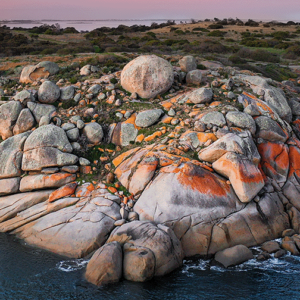
Additional Information
Lorem ipsum dolor sit amet, consectetuer adipiscing elit. Phasellus hendrerit. Pellentesque aliquet nibh nec urna. In nisi neque, aliquet vel, dapibus id, mattis vel, nisi. Sed pretium, ligula sollicitudin laoreet viverra, tortor libero sodales leo, eget blandit nunc tortor eu nibh. Nullam mollis. Ut justo. Suspendisse potenti. Sed egestas, ante et vulputate volutpat, eros pede semper est, vitae luctus metus libero eu augue. Morbi purus libero, faucibus adipiscing, commodo quis, gravida id, est. Sed lectus. Praesent elementum hendrerit tortor. Sed semper lorem at felis. Vestibulum volutpat, lacus a ultrices sagittis, mi neque euismod dui, eu pulvinar nunc sapien ornare nisl. Phasellus pede arcu, dapibus eu, fermentum et, dapibus sed, urna.
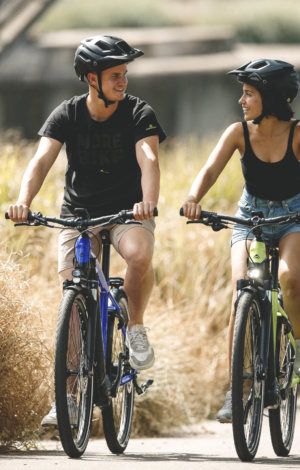

Bicycles Victor Harbor
Bicycle and E-Bike hire in Victor Harbor
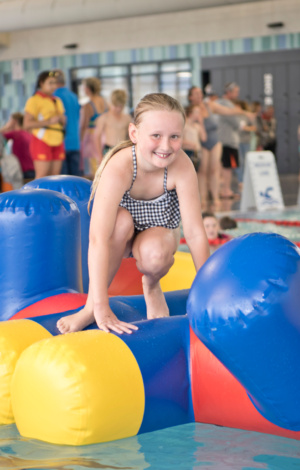
Fleurieu Aquatic Centre
Modern swimming and fitness centre on the Fleurieu Peninsula.
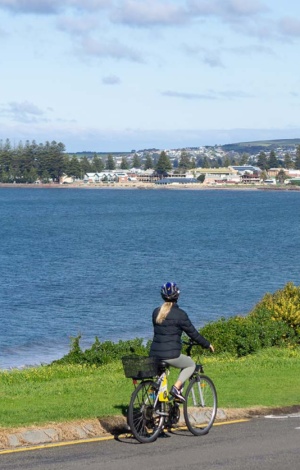
Encounter Bikeway
An on-road and shared trail that links the coastal city of Victor Harbor and the river port town of Goolwa, via the coastal towns of Port Elliot and Middleton.
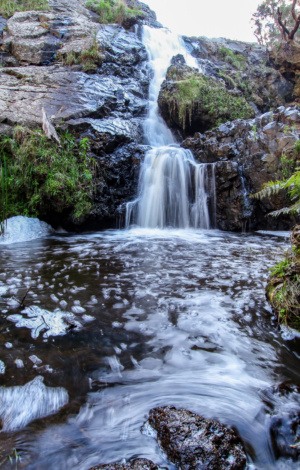
Hindmarsh Falls
Picturesque falls hidden in Hindmarsh Valley.
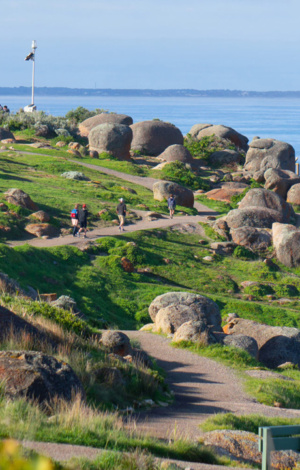
Kaiki Trail Granite Island
Amazing views of the Victor Harbor coastline from Granite Island.
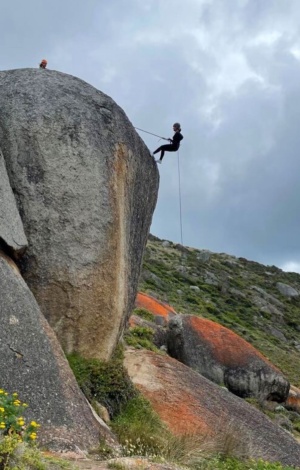
Off the Bluff Abseiling
See The Bluff from a different angle.
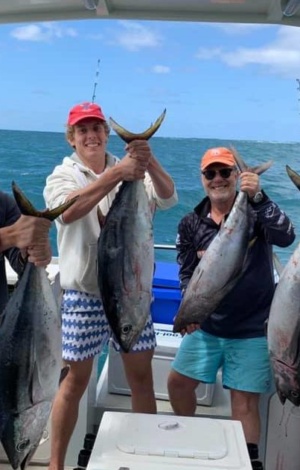
Pirate’s Sea Charters
Private Boat Charters around the Encounter Bay area.
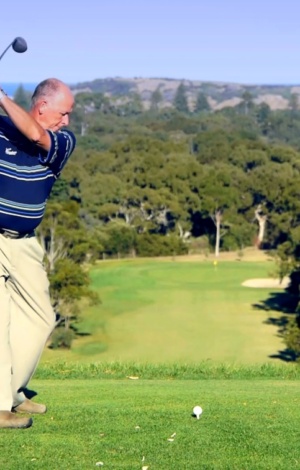
Victor Harbor Golf Club
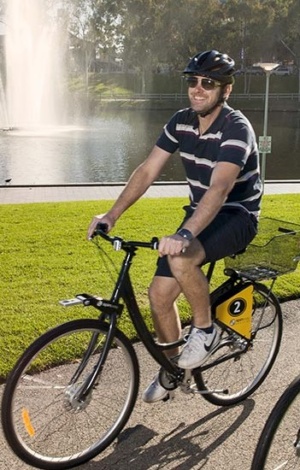
Spinway Bike Hire
Convenient Bike Hire taking you places you want to go.
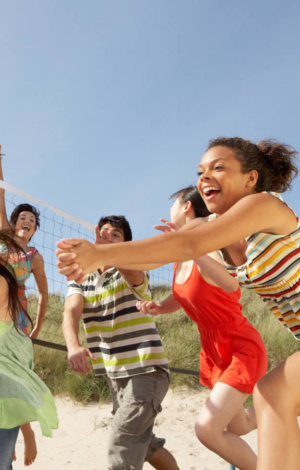
Fleurieu Beach Volleyball
Beach Volleyball in Victor Harbor.
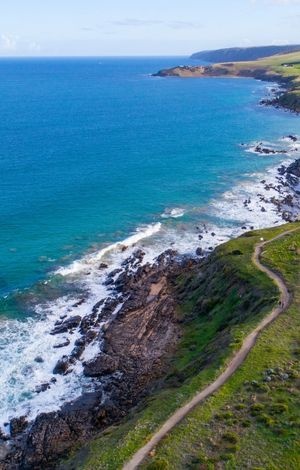
Heritage Trail, Heysen Spur Trail
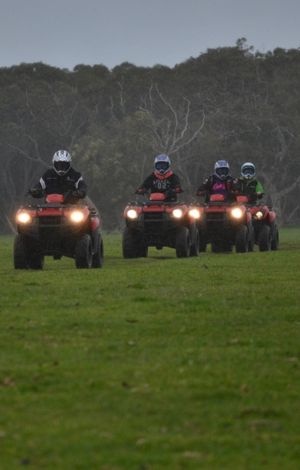
Waitpinga Farm Quad Bike Adventures
- Victor Harbor
- Encounter Bay
- Inman Valley
- Hindmarsh Valley
- Surrounding Areas
- Victor Harbor’s Must Do
- Tours & Attractions
- Wineries & Local Produce
- Nature & Wildlife
- Whale Watching
- Markets & Shopping
- History & Heritage
- Walking Trails & Biking Trails
- Arts & Culture
- Accommodation
- Itineraries
- Talk To An Expert (Visitor Centre)
- Getting Here
- Conferences & Events
- Cafes & Takeaways
- Restaurants & Eating Out
- Festivals & Events
Acknowledgment Of Country
Visit Victor Harbor acknowledge that the Ngarrindjeri and Ramindjeri people are the Traditional Owners of our beautiful lands and surrounding waters. We recognise and respect the cultural connections the past, present and future Traditional Custodians have. We are committed to working with the Ngarrindjeri and Ramindjeri people, supporting their role as custodians of their lands and helping ensure the future prosperity and cultural enrichment of the community.
This website was produced and managed by the City of Victor Harbor.
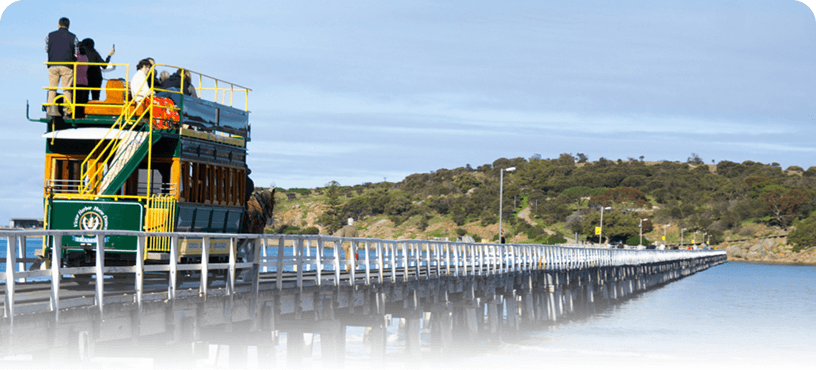
- Explore Overview
- McCracken & Hayborough
- See & Do Overview
- History of Victor Harbor
- Tours & Attractions
- Wineries & Local Produce
- Nature & Wildlife
- Markets & Shopping
- Walking Trails & Biking Trails
- Arts & Culture
- What’s On Overview
- Festival & Events
- Eat & Drink Overview
- Cafe & Takeaways
- Restaurants & Eating Out
- Plan Overview
- Conferences & Events
- Be Inspired
Select your desired option below to share a direct link to this page. Your friends or family will thank you later.

- © Roadtrippers
- © Mapbox
- © OpenStreetMap
- Improve this map
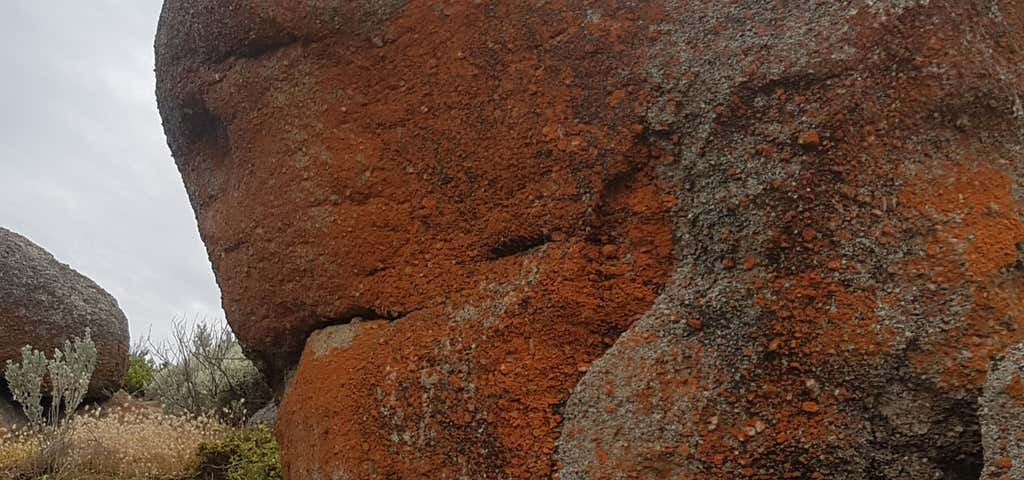
- South Australia
Granite Island Nature Park - Guided Penguin Tours
Granite Island, South Australia 5211 Australia
- Independent
- Public Restrooms
“Take a short stroll or horse tram ride over the wooden causeway that connects the mainland at Victor Harbor to Granite Island Recreation Park.”
Home to the magical little penguins and the majestic southern right whale, this island is characterised by huge granite boulders tinged with orange lichen. The island is characterised by huge granite boulders tinged with orange lichen, with the sound of waves crashing against rocky shores a stirring soundtrack to your visit. Enjoy the coastal scenery and discover the island's interesting history along the Kaiki Walk or go fishing from the jetty, or causeway (no fishing from breakwater). You may even spot a southern right whale between June and October.
Be the first to add a review to the Granite Island Nature Park - Guided Penguin Tours.
- Sun - Sat: 9:00 am - 6:00 pm
Problem with this listing? Let us know .
Has RV parking changed? Let us know .
- Unavailable Parking
- Unavailable Pets Allowed
- Check Restrooms
- Unavailable Wifi
- Unknown Wheelchair Accessible
- Unknown Credit Cards Accepted
Nearby Hotels
Related trip guides, hobart - swansea weekend roadie, foodie adventures a short drive from sydney, explore the southwest, inland melbourne to adelaide, keep exploring with the roadtrippers mobile apps..
Anything you plan or save automagically syncs with the apps, ready for you to hit the road!
Connect with us and hit up #roadtrippers
Tall tales, trip guides, & the world's weird & wonderful.
- Roadpass Digital
- Mobile Apps
Business Tools
- Partnerships
Get Inspired
- Road trip ideas by state
- National parks
- Famous routes
- Voices from the Road
Fresh Guides
- The ultimate guide to Mammoth Cave National Park
- The Ultimate Guide to Badlands National Park
- Route 66 Leg 2: St. Louis to Tulsa
- Route 66 Leg 1: Chicago to St. Louis
- Route 66 Leg 3: Tulsa to Amarillo
- Top 10 things to do in Ohio
- Offbeat Road Trip Guides
- Road Trip USA
- Scenic Routes America
- National Park Road Trips
- Terms and Conditions

- other animals
Guided Nature and Penguin Tour
Stroll Granite Island’s beautiful North Shore and catch the sunset arrival of the little penguins
- Witness a natural sea-to-land miracle at dusk on Granite Island
- Experience the arrival of the little penguins as they return to their burrows
- Take a guided tour 1.5 - 2hrs around the beautiful North Shore
- Cap off a perfect day-trip or vacation to Victor Harbor, South Australia
- Includes experience gift pack with personalised voucher and message card
South Australia has some of the cleanest, most pristine oceans in the world. Granite Island is part of this rich ecology. It's even more diverse than the Great Barrier Reef. It’s also home to the much-celebrated little penguins.
Discover the island with us over a guided tour. Learn about sustainability, wildlife and penguin protection. We promise the most adorable experience watching the little penguins come to roost!
Just under an hour and a half’s drive south of Adelaide is Victor Harbour. Granite Island is located just off the coast, on the beautiful Fleurieu Peninsula. You'll either take a 15-minute walk from Victor Harbor’s esplanade. Or jump on the century-old horse-drawn tram for a canter down memory lane.
We’ll meet on Granite Island near the four tall pine trees (visible from the causeway). See you by the penguin meeting sign. Your tour guide will be wearing a high-visibility top. Once we’ve gathered, your guided tour around the beautiful North Shore will begin. Finally, we’ll welcome little penguins as they return from a day on the ocean. Just watch as they scamper back into their island burrows! It’s a sight you won’t forget.
Tours begin just before dusk and last 1.5 to 2 hours.
Available throughout the year.
Valid for one person.
Suitable for all ages.
Victor Harbor
Please note locations indicated on the map are approximate only and should not be used when planning directions
More from..
- special occasions
- gifts for kids
- gifts for him
- gifts for her
- gifts for couples
Gift Finder
Try the gift finder to find the perfect experience for your loved one, friend or colleague.

Granite Island
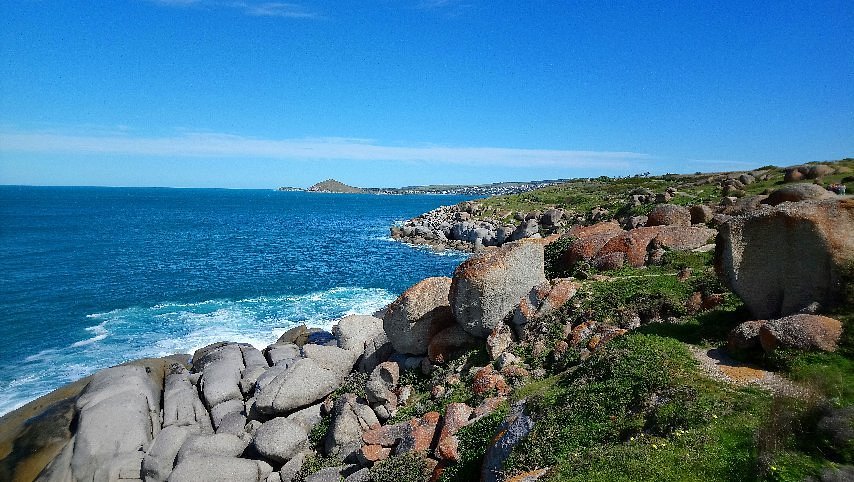
Top ways to experience Granite Island and nearby attractions

Most Recent: Reviews ordered by most recent publish date in descending order.
Detailed Reviews: Reviews ordered by recency and descriptiveness of user-identified themes such as waiting time, length of visit, general tips, and location information.
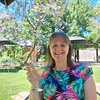
Also popular with travellers

Granite Island - All You MUST Know BEFORE You Go (2024)
- (1.20 km) Victor Harbor City Inn
- (0.97 km) Nightcap at Hotel Victor
- (1.98 km) Victor Harbor Holiday and Cabin Park
- (1.68 km) NRMA Victor Harbor Beachfront Holiday Park
- (1.13 km) The Anchorage Hotel
- (1.01 km) Nino's
- (0.98 km) Brunch On Albert
- (1.04 km) Belicious
- (1.08 km) Loco Mexican
- (1.12 km) Anchorage
- (0.17 km) Victor Harbor South Australia
- (0.51 km) The Big Duck Boat Tours
- (0.75 km) Victor Harbor Horse Drawn Tram
- (0.93 km) Victor Harbor Visitor Information Centre
- (1.03 km) Cockle Train
Granite Island

Top ways to experience Granite Island and nearby attractions

Most Recent: Reviews ordered by most recent publish date in descending order.
Detailed Reviews: Reviews ordered by recency and descriptiveness of user-identified themes such as waiting time, length of visit, general tips, and location information.

Also popular with travellers

GRANITE ISLAND: All You Need to Know BEFORE You Go (with Photos)
- (1.20 km) Victor Harbor City Inn
- (0.97 km) Nightcap at Hotel Victor
- (1.98 km) Victor Harbor Holiday and Cabin Park
- (1.68 km) NRMA Victor Harbor Beachfront Holiday Park
- (1.13 km) The Anchorage Hotel
- (1.01 km) Nino's
- (0.98 km) Brunch On Albert
- (1.04 km) Belicious
- (1.08 km) Loco Mexican
- (1.12 km) Anchorage
- (0.17 km) Victor Harbor South Australia
- (0.51 km) The Big Duck Boat Tours
- (0.75 km) Victor Harbor Horse Drawn Tram
- (0.93 km) Victor Harbor Visitor Information Centre
- (1.03 km) Cockle Train
Granite Island little penguins’ big decline
The tiny penguins used to be a huge drawcard to Granite Island, but now they’re increasingly rare. What happened and what does the picture look like across Australia? Matthew Agius reports.
Photo: Phillip Island Nature Park/PA Wire
A cold wind whips up from the southern ocean, lashing the faces of three dozen people clambering along huge boulders that encircle the popular island off Victor Harbor.
These volunteers – citizen scientists – are searching for penguin burrows. If they’re lucky, they’ll find one of these muddy rock shelters occupied with one or two tiny, fat, blue-feathered chicks, awaiting the return of their parents from a day fishing for garfish or sardines at sea.
More likely, they’ll find a burrow wafting the fishy odour of penguin poo – a sign that the hideaway is occupied, but its residents are out grabbing a feed.
Today, there’s not much to report – 11 active burrows and one chick sighting.
Arisha Silverlake, a biodiversity and conservation honours student at Flinders University, led one of the volunteer groups scrambling over rocks on the south side of the island – one of the least accessible parts of the island for people and pests.
“We knew of two of the active burrows, but we found a third one that definitely had a penguin in it,” says Silverlake.
She’s upbeat. Because as we learn, finding penguins on Granite Island is an increasing rarity.
“And then we found three more that look very promising, so they should have penguins in them: so six altogether. We found four on that side last year – that’s an increase of two, which is great news.”
Great news today, and with counting by another group on the eastern side of the island, that means the survey estimates 22 birds on the island. There’s optimism among the volunteers, who include members of a local conservation group, and ecology students from the state’s universities keen to witness environmental science in action.
But in a historical context, the prospects for penguins for this community are a stark – and sad – contrast to what locals might have expected 20 years ago.
Indeed, had you told a South Australian that Granite Island would have short of two dozen of these birds in two decades, you’d probably be laughed away.
The decline, as we discover, is a perfect indication of the mismatch between the overall health of a species across the wide brown land of Australia and its constituent populations.
Signage at Granite Island. Photo: Matthew Agius
Where big hides small
Eudyptula minor aren’t looking likely to be added to Australia’s list of threatened species any time soon.
Right now, on Phillip Island in Victoria there are at least 40,000 little penguins.
That’s in part due to a bounty of fish prey in the waters surrounding the island – perfect for adult penguins needing to return to hungry mouths at home.
“Sardines and anchovies are the superfoods for penguins. When these are around, penguins thrive, and that’s what we are seeing now,” explains Phillip Island Nature Parks’ research technical officer Paula Wasiak.
Forty-thousand is a big number of birds. So too are the 5440 which waddled ashore one night in October – a record for the nightly Penguin Parade that enthrals Phillip Island visitors every night of the year. The sight of this nocturnal march has big benefits for the coffers as well.
Estimates suggest this colony injects $500 million into the Victorian economy and directly employs around 200 people. In the 2019-20 financial year – a COVID-impacted season – almost over 485,000 visitors attended the spectacle. That’s a boon for local businesses and for ecotourism, they even had their own TV special on the public broadcaster . With such popularity, you’d think other places should take up such an opportunity.
Granite Island, though smaller than Phillip, is located at the end of a newly refurbished causeway connected to the popular seaside town Victor Harbor on the Fleurieu Peninsula, just 80 minutes from the more than one million people of the state capital, Adelaide.
Marine ecotourism has long been part of this region’s fabric: It’s home to dolphins ( Delphinus delphis), long-nosed fur-seals ( Arctocephalus forsteri ) and visiting southern right whales ( Eubalaena australis ) and tourism operators across the region provide opportunities on land and sea for visitors to witness them.
Little penguins on Granite Island were once a significant drawcard as well. Though never at the levels of abundance seen on Phillip Island, Victor Harbor’s local penguin population was several thousand at the turn of the century, and their own nightly march drew frequent gasps of wonder from adults and children visiting the area.
Within 20 years, their population had declined to a number that could be counted on two hands.
And though recent ecological surveys by Flinders University’s BirdLab show their number to be at least two dozen now, it’s hard to see the colony being restored to its former glory without significant action.
The flow-on effects to the local community, from the decline in penguin numbers, are also significant.
As a tourism drawcard, their decline has also seen a drop in tour participants. Estimates 10 years ago suggested that, annually, 25,000 people participated in a night-time penguin tour. Since then, the Island’s penguin centre has closed, and numbers have dwindled.
“Prior to Covid-19, it was estimated that little penguins could attract around 10,000 people to penguin tours,” Victor Harbor mayor Dr Moira Jenkins tells Cosmos .
“Granite Island is a popular attraction in Victor Harbor and a key reason why many travellers visit our coastal town. The council has always held the view that Little Penguin conservation must be a priority in order to retain tourism value of the island.”
The council, while representative of the local community, has little jurisdiction over the island and its natural inhabitants though. Custodianship of the island rests with the state environment department; the newly renovated causeway is managed by the transport department. The only business footprint on the island belongs to a privately run café on its north side.
Former tour operator Stephen Hedges now coordinates a local volunteer group that works with Flinders’ University BirdLab to monitor the species on the island each night.
He reckons the economic value of the species to local operators was, at least, in the tens of thousands.
“And yet, we’ve let them slip through,” Hedges says.
But business interests extend on shore as well. While the decline in penguin spotters does not necessarily impact other ecotourism attractions, the decline of the species is something the local chamber of commerce would like addressed.
“Granite Island is one of Victor Harbor’s jewels in the crown for tourism and it serves as an ecological rich home, source of food and nesting area for a range of indigenous birds,” says Colin Shearing, who heads up Business Victor Harbor, the area’s chamber of commerce.
“Simply put, it is critical to Victor Harbor and the greater Fleurieu’s community and commerce sector, that the entire ecosystem is well-managed, nurtured and protected.”
Species loss in a microcosm
Before the turn of the millennium, surveys indicated over 3,000 birds were present on Granite Island. High abundance was a similar story for many other islands dotted along South Australia’s 4000 kilometres of coastline.
But data is aging, and as the threat of climate change marches on, it’s difficult to know what the state of the species’ conservation is. Pearson Island on state’s far west coast was the supposed home of 12,000 of the species, but that data is approaching 20 years of age.
Troubridge Island off the state’s Yorke Peninsula – about 100km north-east of Granite Island – is home to another colony. From 3000 birds in a 2009 survey, numbers were estimated at just 450 in 2017 . Emu Bay on Kangaroo Island was surveyed at just under 300 birds in 2008, within a decade, follow-ups suggest numbers may now be a quarter of that.
Monitoring is difficult. As the state’s environment department notes, “Little penguins mostly occur at sea and on numerous – about 80 to 85 – seldom-visited islands in South Australia.”
“They are logistically difficult to monitor in a repeatable and regular way,” says the department’s Director of Conservation and Wildlife, Lisien Loan. “Detectability and the numbers present both vary throughout the year.”
At least for Granite Island, the department implements several tactics to reduce threats to its wildlife. These include long-term black rat baiting programs, a recently installed fox gate on the causeway, night closures of the island and during “high risk events such as the schoolies festival”.
Foxes captured on Granite Island.
Although funding for regular surveys is scarce, Dr Diane Colombelli-Negrel, a director of the Flinders University Birdlab project, has continued to assess key colonies where there is a strong understanding of historic breeding success. According to her data, Kangaroo Island’s Penneshaw colony – 65km from Granite Island – appears to be “booming”, while others have seen mixed success in recent years.
The reason for Granite Island’s decline appears to be a decade-long drought at the nearby Murray Mouth, 25km east across Encounter Bay – where Australia’s largest river system empties into the Southern Ocean.
A study led by Colombelli-Négrel this year found the river’s reduced outflows during the drought contributed to penguin declines. It also attributed increased sea surface temperatures to species reduction. Both of those factors are expected to be exacerbated by climate change increasing the number and duration of droughts, and warming oceans.
Should that further reduce garfish numbers in the region, then the penguins will find themselves in greater competition for limited food resources with other species, like long nosed fur seals.
Fur seals also enjoy the taste of little penguins…
“We know that little penguins like to forage near river estuaries… so we started looking at the Millenium Drought and how that affected river outflow to the ocean,” Colombelli-Négrel tells Cosmos.
“When the drought happened, the river flow to the ocean went to zero… and that’s when the little penguin population started declining. In 2010, when the flow started going into the ocean, that’s when the population started stabilising, and we found an interaction between rainfall, river outflow, primary connectivity, the fish, which are obviously directly impacted as well, and the penguins. It’s all linked together.”
Dr Diane Colombelli-Negrel, a director of the Flinders University Birdlab project. Photo: Matthew Agius
Climate change won’t just affect penguins in South Australia.
In New South Wales, there is one known mainland breeding colony of little penguins, in the seaside suburb Manly. That colony is endangered under the state’s environmental legislation and, since 2007, has a dedicated recovery plan and team. Despite the threat of fox attacks (27 birds were killed in 2015), the population remains stable at 40 breeding pairs. The NSW Environment Department pointed Cosmos to its Seabirds to Seascapes program as an example of its undertaking to maintain the species’ population along the coast. This includes penguin colony censuses, coastal habitat restoration and fur seal monitoring, as well as genetic tracking of penguins to understand their movements.
Western Australia’s little penguin population is also vulnerable – particularly to heating oceans.
Dr Belinda Cannell from the University of Western Australia has been tracking the species for decades and is currently preparing research into the impact of marine heatwaves off Australia’s south-western coast.
“We had a severe marine heatwave in 2011, which recorded water temperatures three to five degrees above average,” she says. “That had a huge impact on food resources … the species and abundance … in the areas that the penguins forage in, and the location of where those fish were.
“The other reason why we have high mortality here is that the birds get hit by watercraft.”
‘Gordon’ the little penguin at Adelaide Zoo. Photo: AAP/Adelaide Zoo
The aptly named Penguin Island is a tourism destination off the Perth coast. Like Granite Island, it’s seen a large decline in numbers, although Cannell notes that the reasons for this are many, and complex.
Some of these are similar to other colonies along the continental south-east, some are more pronounced. Hyperthermia – overheating – for instance, is perhaps more prevalent in the west. Perth typically has the hottest summers of southern capitals, which will increase in a changed climate.
“It is a complex situation and there’s not one easy answer,” Cannell says.
“So [addressing] climate change, and tourism – managed well – I think is probably the catch all for everything.”
In September, Cosmos looked into how Australia’s species are assessed under the Environmental Protection and Biodiversity Conservation Act – legislation that will be overhauled by the Albanese Government in 2023.
Because of the large populations in select areas of the coast – like Phillip Island – the species won’t be formally threatened on a national scale any time soon, though like New South Wales, subnational jurisdictions could make their own assessments under state legislation.
In South Australia, the species’ conservation status remains uncertain. Assessments undertaken last decade do suggest – using international standards – that its populations are ‘Near Threatened’. In the Adelaide and Mount Lofty ranges – an assessment area which includes Fleurieu Peninsula colonies, it is critically endangered.
And that’s now being felt in the community.
“We keep saying ‘I remember when…’” Hedges says, of the habit of locals to reminisce of a time where local species were greater in number.
“We often take for granted what’s in our own backyard… The numbers are so low that among people there’s a general feeling that they’ve almost gone.
“It would be wonderful to turn it around and have some good news at the end of ‘I remember when…’”.
This article is republished with permission from Cosmos Magazine .

Footy legends help veterans score new goals
Going green to get ahead: new sustainability support for small sa businesses, discover haunted pubs and secret tunnels with sa’s history festival, sa’s history festival brings a month of discovery.
We strive to deliver the best local independent coverage of the issues that matter to South Australians.
- Food & Wine
- Arts & Culture
- About InDaily
- Support Independent Journalism
- Advertising & Sponsorship
- Terms & Conditions
- Back Issues
Home Page › Our tours
- Our Service
- Our Photo Album
We take part in BBC series of documentaries "World's Busiest Cities"(Moscow)

Buy Tickets to the Bolshoi Theatre

Other special offers...
Interpreting and assistance at exhibitions and conferences, our garage ( vehicles+drivers), where to stay in moscow, what and where to eat in moscow, visa support, learning and discovery, our partners (trips to st.petersburg).
Copyright 2015 - Moscow Navigator
Moscow Bike TOur
- Page active

Description
Highlights:.
- Find adventure at every turn
- Take pride in covering Moscow in record time
- Enjoy the icons in style
- Explore off the beaten path routes of Moscow
- Expert commentary as you travel around the city
- Test your nerve, driving on crazy Russian roads
- Get an Endorphin Rush
- Savour delicacies from different regions of Russia in a traditional restaurant
Only in Moscow for a short time and want to get the most out of the city and have fun? Then a 3-hour bike tour in Moscow is what you need! You won’t hear much about Russian history or become an expert on Russian art, but you will experience all the rest of Russian culture! This tour gives you a unique perspective of a little bit of everything in 3 or 5 hours: must-see tourist sights, local hangouts, Russian food, a glimpse of the modern Moscow life, amazing photo opportunities, a bit of Russian history, and a lot of fun!
This is a great opportunity to cut the usual all day tour down to only 3 or 5 hours and get the most out of the city while having fun and being fit in the greatest locations around Moscow!
A bike trip is sure to capture your heart. It enables you to see the heart of Moscow within the Boulevard Ring and to explore some non-touristic areas of the city, to get an image of the city centre and to work out at the same time.
Our tours differ and depend on whether you are interested in city scenery or nature-like landscape. A variety of places in Moscow are great for riding a bike: these are large parks, yards with old mansions, and historical streets in the centre.
Let’s see what’s waiting for you!
Here are 4 suggested itineraries for a 3-hour tour:.
Moscow Bike Route #1
St. Basil's Cathedral, GUM, Kazan Cathedral, State Historical Museum and Lenin's Mausoleum
Revolution Square and Theatrical Square
Bolshoy Theatre, Metropol Hotel, Chinese Wall, State Duma of Moscow
Alexander Garden
The Tomb of the Unknown Soldier, fountains, the Grotto, Central Exhibition center, Kutafya tower, Kremlin wall and towers
Historic City Center
Tverskaya street with its beautiful historical architecture, China town (Kitai-gorod), an old historical area of Moscow
Beautiful City bridge leading to Gorky Park with scenic views of Christ the Savior cathedral and the Moscow River. Explore all the beauties riding a bike along the riverside pathways.
Sculpture Park
Peaceful Crimean embankment is one of the quietest area of Moscow city with painters' works at the Vernisage , close proximity to new Tretyakov Gallery and good views of Christ the Savior Cathedral , Peter the Great monument and the Crimean bridge.
Delicious lunch at a café/restaurant
Arbat street + Stalin Skyscraper
The Arbat has existed since at least the 15th century and is proud of being the oldest surviving street of the Russian capital. Nowadays, it is now an entertainment and event mecca for Muscovites and tourists alike.
Victory park
Get thrilled with 142 metres Obelisk and Victory Park museum , which is an open-air museum dedicated to the Russian victory of 1945, built in 1995 to celebrate 50 years of victory
Moscow Bike Route #2
Pyatnitskaya street - the Tretyakov Gallery - Luzhkov Bridge - the Cathedral of Christ the Savior - the Gogolevsky Boulevard - the Nikitsky Boulevard - the Tverskoy boulevard - Teatralnaya street - the Bolshoi Theatre – the Kitai - Gorod - Red Square and GUM store - the Bolshoi Moskvoretsky Bridge
This route is the best one if you want to see the heart of Moscow. It goes right through the major places of interest and touches upon the most exciting and vibrant areas of Moscow such as part of the Boulevard Ring, which is absolutely loved by everyone.
Cozy streets of Zamoskvorechye will never leave you indifferent. This district has a long and vivid history and is full of old baroque houses along with Stalinist buildings. It includes three theatres, three museums and sixteen churches.
Back in the 18 th century Zamoskvorechye was known as a quiet, country-like land of single-storey houses and conservative businessmen. It remained country-like and is much more filled with business than before, as this area is just right in the city centre.
You’ll learn:
- what was previously on the site of the Novokuznetskaya metro-station;
- names of four abandoned metro stations and how to find these stations;
- what is the oldest bridge among all the bridges in Moscow;
- how old was Pavel Tretyakov when he decided to collect paintings, that are now exhibited in the Tretyakov gallery;
- what does the real form of the Boulevard Ring in Moscow look like;
- what tricks did the Russian government used to save the houses and buildings from bombing during the World War II;
- what unofficial name the Bolshoi Moskvoretsky bridge has
Moscow Bike Route #3
View over the Kremlin - The Luzhkov Bridge – The Strelka Institute – The Muzeon Park – The Gorky Park – Neskuchny Garden – Sparrow Hills – The Luzhniki Stadium - Novodevichy Convent – The Arbat Street – The Gogolevsky boulevard - The Cathedral of Christ the Savior – The Bolotnaya Square
This route includes the most popular city-sights and goes along the Moskva-River. It starts with an observation point, from which you may enjoy the view over the Kremlin, and covers all the most beautiful green areas of Moscow. Historical sites are included into the route so you can feel the historical vibes of ancient Moscow.
- where is hidden an island Moscow;
- where in Moscow you can get printed music of the most sweet masterpieces like “Chocolate waltz” and “Cake-gallop” along with a box of chocolates of the 18 th century;
- why the Luzhkov bridge is also called “the bridge of kisses”;
- the place where the famous Olympic symbol – the Olympic Bear of the Olympics-1980 was flown from;
- the stage where Rolling Stones and Madonna performed when they came to Moscow;
- why the Krymsky bridge was Stalin’s favourite bridge and what musical instrument it represents;
- where living statues in Moscow could be found in 1740s;
- myths and legends about inhabitants of the main building of Moscow State University;
- story about why Sparrow Hills were called that way;
- how Napoleon was cheated when he was going to burn down the Novodevichy convent;
- what was supposed to be on the site where the Cathedral of Christ the Savior is now;
- why Moscow was nearly burnt down in the 15 th century and which role the Arbat street played in it.
Moscow Bike Route #4
Starting with wide area of the VDNKh, you are to learn interesting and fun facts about this spectacular part of Moscow.
- where is a hidden the secret bunker under Moscow (and no, it’s not a famous Bunker 42 everybody knows about;
- why the number of golden statues at the fountain is more than the number of Soviet republics, although it is said to correspond them;
- why one of the Stalin statues was called “matryoshka” (Russian doll);
- what was Picasso’s favourite statue at the exhibition in Paris in 1937.
You’ll see:
- the world’s first light-music fountain that was built in 1950-1954;
- pavilions that symbolize Soviet republics;
- the Botanic garden which is twice as big as the Principality of Monaco;
- the largest green-house in Europe (for the opening day in 1945);
- English garden at the Ostankino mansion;
- Ostankino Tower, one of the tallest structures in Europe;
- the most beautiful flowers in hidden places of the parks.
Biking through VDNKh, Botanic garden and the territory of the Ostankino park will definitely be appreciated by nature-lovers and all those who are keen on speed, who knows no limits and want to explore off the beaten path of Moscow.
We can customize your bike adventure to meet your individual interests.
Our bicycle tour in Moscow gives you a chance to have a s pectacular ride with wonderful photo opportunities and an unforgettable cultural experience!
What you get:
- + A friend in Moscow
- + Private & customized tour
- + An exciting tour, not just boring history lessons
- + An authentic experience of local life
- + Flexibility during the tour: changes can be made at any time to suit individual preferences
- + Amazing deals for breakfast, lunch, and dinner in the very best cafes & restaurants. Discounts on weekdays (Mon-Fri)
- + A photo session amongst spectacular Moscow scenery that can be treasured for a lifetime
- + Good value for souvenirs, taxis, and hotels
- + Expert advice on what to do, where to go, and how to make the most of your time in Moscow
*This tour can be modified to meet your preferences
Write your review
- Art, History and Gardens in Japan
- Art in France
- Slide Shows
- Silk Road of China: Art, History & Archaeology
- Art in Paris
- Art in Italy
Moscow and St. Petersburg Art Adventure
- Art in London
- Art in New York
- Boston Art History Architecture
- Private Trips
- Newsletter Sign-up
- Uncategorized
- Comments from Trip Participants
- Winterthur & Brandywine Valley
- Reading Lists
- Travel Tips
- Mountain Hiking Holidays
Recent Posts
- I Keep Bumping into this Guy
- Art of Textiles
- Isamu Noguchi: New York and Japan
- Japan: New Reading for Art Tour to Japan and mountain hiking too
- Camino and the Kumano, Dual Pilgrimages
Recent Comments
- The Silk Road with Art Tours with Amy Osaki | Willamette International Travel on Silk Road of China: Art, History & Archaeology

- Reserve Your Trip
- Trip Application
- Arrival-Departure Form
- Insurance Waiver
- Trip Evaluation
- Passport Information – U.S. State Department
- Willamette International Travel
THIS TRIP IS NOT CURRENTLY SCHEDULED Over the years, Amy has developed and operated trips to a variety of destinations including this one, but not all trips are offered every year. If you are interested in joining a scheduled departure of this trip in the future, please send us an email and let us know. Click to send us an email or use the form at the bottom of this page.
We can organize and operate this trip as a private group departure with a minimum group size of 8 persons. Start organizing your private Russia art adventure here .
Best time to travel: June for the “White Nights” Best gateway city: Moscow and St. Petersburg, Russia Moscow and St. Petersburg Slide Show
Experience the art treasures of Moscow and St. Petersburg with guide, Amy Osaki. Begin in Moscow, continental Europe’s largest city, the seat of the government of Russia, and now home to over twenty billionaires! View iconic sites such as the Kremlin (which began as a fortress in the eleventh century), Red Square, and the sixteenth century St. Basil’s Cathedral. Then explore the art masterpieces at the Tretyakov Gallery, the National Museum of Russian Fine Art encompassing works from the eleventh to the twentieth century. Visit the Armory at the Kremlin filled with Imperial treasures including Faberge eggs once exchanged by the tsar and tsarina at Easter. Conclude your Moscow experience at the quiet seventeenth century Novodevichy Convent, one of many World Heritage sites included in the trip.
After a short flight, continue the trip with five days in St. Petersburg where you’ll be immersed in the opulence of Imperial Russia. Established by Tsar Peter I in 1703, St. Petersburg (known as Petrograd and Leningrad for most of the twentieth century) was the capital of the Russian empire for over two hundred years until the Russian Revolution of 1917. The Hermitage—said to be the largest art museum in the world with a collection of over three million objects housed in four main buildings—rivals the Louvre in Paris for both the quantity and quality of its treasures. Founded in 1764 by Catherine the Great, and open to the pubic for over two hundred years the museum is so vast that we’ll spread our visit out over several days and organize it by different themes. Also on the schedule is a visit to the Peter and Paul Fortress—the original citadel above the river founded in 1703—as well as some of the Imperial palaces in and around St. Petersburg such as Peterhof, a World Heritage Site. Peter I hired French architects to work on his many palaces, including Jean Baptiste Le Blond who worked with Andre Le Notre at Versailles. Consider enhancing your Russian experience by purchasing tickets to a performance—perhaps a ballet at St. Petersburg’s Mariinsky Theatre (also known as the Kirov).
Day 1 Overnight in Moscow Arrive in Moscow and transfer to your centrally-located hotel, your base for the next two nights. Enjoy an afternoon and early evening walk through Red Square (Krasnaya Ploshchad) past St. Basil’s Cathedral, and GUM department store all of which are back-dropped by the walls of the Kremlin fortress. Remember that we are here during the fabled “White Nights” when the summer days linger with light-filled evenings.
Day 2 Overnight in Moscow Within the walls of the Kremlin fortress, visit the Armoury Museum, one of Moscow’s oldest museums established at the start of the nineteenth century. The Kremlin Armoury was the royal arsenal; it produced and stored the weapons, jewelry and other regalia of the tsars. The museum’s collection encompasses four thousand items of applied art from Russia and elsewhere dating from the early fourth century to the twentieth century. Later in the day, visit the collection of masterpieces of the renowned Tretyakov Gallery. The Tretyakov collections were begun by the philanthropist Tretyakov brothers in the early nineteenth century. The gallery is recognized by many as a key repository of Russian art spanning the nation’s artistic tradition from early Orthodox icons to art nouveau, impressionist, and avant-garde works.
Day 3 Overnight in St Petersburg Enjoy a morning visit to the sixteenth century Novodevichy Convent named a World Heritage Site by UNESCO in 2004. The convent’s name is sometimes translated as “New Maidens’ Monastery” to differentiate is from the convent within the walls of the Moscow Kremlin. Surrounded by white crenellated walls, this complex of churches has remained essentially intact since the seventeenth century. Here you’ll find the five-domed Cathedral of Our Lady of Smolensk with its spectacular iconostasis and the tall, red and white Gate Church of the Transfiguration which is often cited as a fine example of “Moscow Baroque” architecture. The neighboring Novodevichy Cemetery is the final resting place of the likes of Anton Chekhov, Sergei Prokofiev, Dmitri Shostakovich, and Boris Yeltsin. This afternoon fly to St. Petersburg, Russia’s second largest city situated on the banks of the Neva River where it empties into the Gulf of Finland.
Day 4 Overnight in St Petersburg Start of your exploration of St. Petersburg with a visit to the Peter and Paul Fortress, the original citadel of St. Petersburg. The fortress was built to the designs of the Swiss Italian architect Domenico Trezzini in the early eighteenth century. Trezzini’s Peter and Paul Cathedral dominates the fortress grounds and its iconic golden spire punctuates into the Baltic sky. Later visit the Yusupov Palace on the Moika, acclaimed as an “encyclopedia of St. Petersburg aristocratic interior design.” The palace was the home of the Yusupov family from 1830 and 1917 and was the place where Grigori Rasputin, a spiritual mentor to Tsar Nicholas II and the Royal Family in the early 20th century, was assassinated. A visit to the Church of the Savior on Spilled Blood built between 1883 and 1907 rounds out the day. The church was built in “Russian Revivalist” architectural style by Tsar Alexander III in commemoration of his father, Alexander II. The church occupies a conspicuous location on St. Petersburg’s Griboedov Canal and contains 7,500 square meters of mosaics; the interior walls and ceilings are completely covered by mosaics.
Day 5 Overnight in St Petersburg Seeing St. Petersburg’s Hermitage Museum in a day would be like trying to see the Smithsonian in a day! Rather than a forced march through the galleries at a rapid pace, we will slow down and savor the masterpieces. Remember, there are nearly seven miles worth of exhibitions! Today we focus on “Imperial Russia,” touring the rooms decorated for members of the Russian Imperial Family and viewing the art they commissioned and collected. This is the art that influenced the style of the grand palaces of the era. View the Grand Suite of rooms, Peter I’s collection of gold, and the jewelers art owned by the Russian Imperial Family (including Fabergé eggs, gold and diamonds). Here, too, are the rooms of Catherine II and her son Paul I with their fifteenth to eighteenth century French paintings and sculpture (Poussin, Watteau, Fragonard, Chardin, and Houdon).
Day 6 Overnight in St Petersburg Return for a second dose of the Hermitage! Today is dedicated to the famous European masterpieces exhibited at the Hermitage. Feast your eyes on memorable works by Leonardo da Vinci, Raphael, Michelangelo, Tintoretto, Tiepolo, Velazquez, and El Greco. At the Hermitage, you can revel in Rembrandt; there are twenty of his works in the museum’s collection. After lunch, enjoy the eighteenth to twentieth century masterpieces of Monet, van Gogh, Gauguin, Rodin, Picasso, Matisse and Kandinsky. Digest the art and reflect on this unique collection of human creations. Consider an evening performance, possibly at the Mariinsky Theatre.
Day 7 Overnight in St Petersburg Journey by hydrofoil across the Gulf of Finland to experience Peter I’s palace at Peterhof, a series of palaces and gardens that evoke comparisons with Versailles which Peter visited in 1715. Begun in 1714 with the construction of the Monplaisir palace and expanded by later Imperial generations who added Rococo and Neo-classical elements, Peterhof is now a World Heritage Site. The creative mastery of architects, engineers, artists and craftsmen from throughout Europe is on display here and all is choreographed to celebrate water in homage to Peter, the maritime emperor.
Day 8 Overnight in St Petersburg Go behind the scenes with an excursion to the Hermitage Museum’s Staraya Derevnya Restoration and Storage Center on the right back of the Neva River north of Kamenny Island. This vast treasure house is only accessible by private tour. Later, travel to Vasilvesky Island across the river from the Hermitage to visit Menishkov Palace completed in 1721 and now the oldest stone building in St. Petersburg. Enjoy a farewell dinner this evening.
About your guide : Amy Osaki holds a master’s degree from the Winterthur Museum. She studied art at the Louvre Museum in Paris and worked as a museum curator for over a decade including six years at the Portland Art Museum. She is an award-winning art educator who has led art trips around the world for the last fifteen years with Walking Softly Adventures. Many of these trips were offered for graduate credit from Portland State University where she is an Adjunct Professor.
Resources for Further Learning
- Preview part of the collection of the State Tretyakov Gallery at its website.
- Learn more about the Moscow Kremlin .
- Prepare yourself to experience the Hermitage . You can even shop on-line at the museum’s on-line museum store!
We're looking forward to hearing from you! You may contact us by telephone at 503-788-9017, by e-mail ([email protected]) or by completing and submitting the form below. Please enter any questions or comments in the "Message" box. PLEASE BE SURE TO MENTION THE TRIP IN WHICH YOU'RE INTERESTED. You must enter a valid email address in order to submit this form successfully. When you're finished entering information, enter the CAPTCHA code where indicated and click the "Submit" button at the bottom of this page. Art Tours by Amy does not release any of the information you provide us to any third party without your express permission.
Reviews › Private St Petersburg and Moscow tour
MaxiBaltTours made our dream come true.
We were set up to do a cruise of the Baltic Capitals. Our ship Norwegian Star was to stop in St. Petersburg,Russia with an over night visit. I really wanted to go see The Red Square/Kremlin so my husband found this company who said they could make it happen for us. Alexei set up a private tour that took us to Moscow. He arranged our transport by plane and then our return by train. In Moscow we had a lovely tour guide who showed us exactly what we wanted to see. We were back in the ship by 12am.
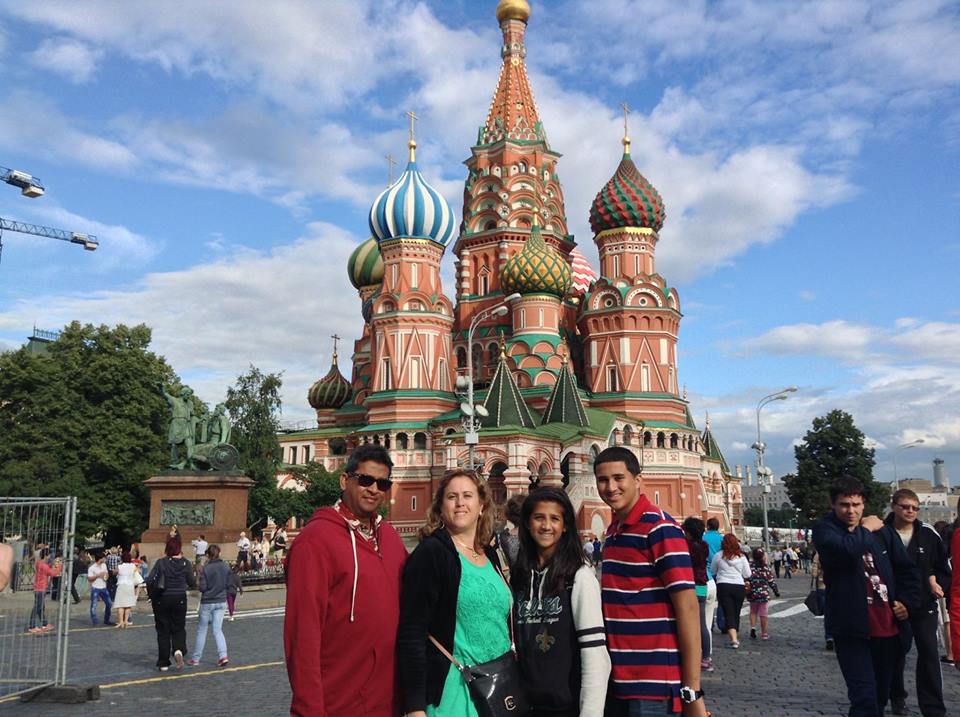
Then the next day Alexei arranged our private tour in St. Petersburg.
Our visit to Russia was amazing and definitely the highlight of our trip!
Alexei Volkov was professional and really well organized.
I recommend MaxiBalt Tours for your Russia visit.
Elisa D Miami Florida, United States
Please Contact MaxiBaltTours to get more information and to book your tour
All reviews
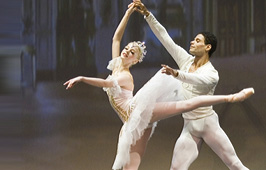
If you would like our travel consultants to contact you to discuss the details of your vacation request, simply fill in the form below. Then, click the Submit button. We will make every effort to reply to your inquiry within 24 hours of receiving your email. If you don't receive our mail back - please check your SPAM folder. Your information is collected for reference purposes only.
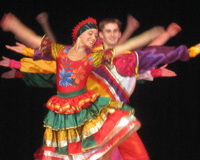
Russian Folk Show
When you are in St. Petersburg, ballet is one of the things you can't miss! This is where the Russian Composer Peter Tchaikovsky wrote Swan Lake, one of the most beautiful and dramatic ballets of all times. Ballet here is always accompanied by an orchestra and you can be guaranteed that you will see a high quality performance.
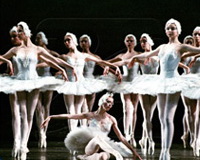
Russian Ballet
If you are looking for a great way to relax after a day of sightseeing and want to get to know the Russian culture and mind, then this show is definitely for you. You will see Russian & Cossack dancing, listen to famous national instruments while beautiful voices sing of the joyful traditions in the Russian countryside. Feel yourself Russian!
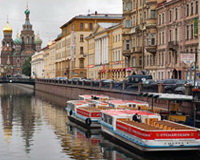
What can be more impressive than seeing the beauty of St. Petersburg leisurely from the water? The city is criss-crossed with small rivers and canals which make the city look like Venice or Amsterdam. Our comfortable boat will take you past the granite embankments along the main waterways of St. Petersburg.

IMAGES
COMMENTS
Contact Tours South Australia. If you need more information about South Australian Tours and Sightseeing call us or fill out the form below. 08 8357 1594. Granite Island is home to a small colony of wild Little Penguins. Granite Island Nature Tours are the best way to see Little Penguins in their natural habitat.
Overview. At just over a foot tall (33 centimeters), little penguins are the world's smallest penguin—and Granite Island off Victor Harbor is home to a colony, which you can only visit on a guided tour. Dusk is the time to see these adorable birds returning from the ocean, as well as the island's other rich wildlife and a spectacular sunset.
Guided Nature & Penguin Tour. $25.00. Duration: 90 Minutes. Location: Victor Harbor, South Australia. Product code: PT. Come and experience a guided tour around the beautiful North Shore of Granite Island. Experience the arrival of the Little Penguins coming home from a day on the ocean and watch them return to their burrows.
Overview. At just over a foot tall (33 centimeters), little penguins are the world's smallest penguin—and Granite Island off Victor Harbor is home to a colony, which you can only visit on a guided tour. Dusk is the time to see these adorable birds returning from the ocean, as well as the island's other rich wildlife and a spectacular sunset.
Granite Island Recreation Park Park fees: Free entry. 83.88km from Adelaide. Booking FAQs. ... The Little Penguin (Also known as fairy penguin, blue penguin or little blue penguin) ... Fees apply for guided penguin and wildlife tours. Bookings Victor Harbor Visitor Information Centre at the Causeway. Phone: (+61 8 ...
Granite Island is situated in the Encounter Marine Park and full of marine life including dolphins, penguins, leafy sea dragons, seals and an abundance of marine life. ... Big Duck Boat Tours offer daily tours departing from the Causeway, where can spot dolphins, seals and whales (during whale season). ...
Enjoy the coastal scenery and discover the island's interesting history along the Kaiki Walk or go fishing from the jetty, or causeway (no fishing from breakwater). You may even spot a southern right whale between June and October. Be the first to add a review to the Granite Island Nature Park - Guided Penguin Tours.
Witness a natural sea-to-land miracle at dusk on Granite Island. Experience the arrival of the little penguins as they return to their burrows. Take a guided tour 1.5 - 2hrs around the beautiful North Shore. Cap off a perfect day-trip or vacation to Victor Harbor, South Australia. Includes experience gift pack with personalised voucher and ...
Guided Penguin Tours - Granite Island. If you're spending a few days at Victor Harbor, drop by Granite Island to see the penguins. There are tours that start at dusk every night, seven days a week, a chance to watch the island's Little Penguins come up from the ocean and back to their burrows. It's important to book a tour beforehand either by ...
Granite Island. 1,042 Reviews. #5 of 38 things to do in Victor Harbor. Nature & Parks, Islands. Victor Harbor, South Australia 5211, Australia. Save. Seal Island Boat Tour from Victor Harbor. 49. Book in advance.
Children of all ages are welcome on a Granite Island Guided Nature and Penguin Tour. We do ask that children be respectful of the wildlife and their habitat, and listen to all tour guide instructions. Our child price applies to children aged 5-15 years old. Children aged 4 and under are free of charge. Additional Information:
Granite Island: Granite Island Penguin Tour - See 1,042 traveller reviews, 707 candid photos, and great deals for Victor Harbor, Australia, at Tripadvisor.
At just over a foot tall (33 centimeters), little penguins are the world's smallest penguin—and Granite Island off Victor Harbor is home to a colony, which you can only visit on a guided tour. Dusk is the time to see these adorable birds returning from the ocean, as well as the island's other rich wildlife and a spectacular sunset.
088552 0300. [email protected]. Visit Website. Home to the magical little penguins and the majestic southern right whale, this island is characterised by huge granite boulders tinged with orange lichen. Take a short stroll or horse tram ride over the wooden causeway that connects the mainland at Victor Harbor to Granite Island Recreation Park.
In 1992, the island's population was believed to be stable and was estimated to total between 1000 and 1500 little penguins. Nocturnal tours of the penguin colony commenced that year as a joint initiative of the National Parks and Wildlife Service and the Victor Harbor Council. ... In January 2016, the Granite Island Penguin Centre closed.
Book your tickets online for Granite Island, Victor Harbor: See 1,052 reviews, articles, and 739 photos of Granite Island, ranked No.3 on Tripadvisor among 40 attractions in Victor Harbor. ... Can someone please tell me the cost of the penguin tour on Granite Island please? And given its late departure time, is it suitable for small children ...
Cultural Tours in McLaren Vale: Check out 8 reviews and photos of Viator's Granite Island Penguin Tours. 6a0032c8-2a2f-4f54-9779-b3cba630b3e1.
Enjoy the coastal scenery and discover the island's interesting history along the Kaiki Walk or go fishing from the jetty, or causeway (no fishing from breakwater). You may even spot a southern right whale between June and October. Duration: 1-2 hours. Meets animal welfare guidelines. Suggest edits to improve what we show.
Pearson Island on state's far west coast was the supposed home of 12,000 of the species, but that data is approaching 20 years of age. Troubridge Island off the state's Yorke Peninsula - about 100km north-east of Granite Island - is home to another colony. From 3000 birds in a 2009 survey, numbers were estimated at just 450 in 2017. Emu ...
Themed Tours: Interested in something in particular? Visit our "Themes tours" section. Customized Tours: Plan your Moscow itinerary.Select the sights from the list and\or add other places of interest you would like to visit. Tours for children and students: Explore Russia and have fun! Learn Russian history and paint your own matreshka doll.
Moscow Bike Route #3. View over the Kremlin - The Luzhkov Bridge - The Strelka Institute - The Muzeon Park - The Gorky Park - Neskuchny Garden - Sparrow Hills - The Luzhniki Stadium - Novodevichy Convent - The Arbat Street - The Gogolevsky boulevard - The Cathedral of Christ the Savior - The Bolotnaya Square.
This vast treasure house is only accessible by private tour. Later, travel to Vasilvesky Island across the river from the Hermitage to visit Menishkov Palace completed in 1721 and now the oldest stone building in St. Petersburg. Enjoy a farewell dinner this evening. About your guide: Amy Osaki holds a master's degree from the Winterthur ...
Baltic shore tours and excursions. Sign in. [email protected] +7-921-934-5681. WhatsApp / VIBER / Telegram. Shore tours. Private tours. Group tours. Baltic ports. City tours. Exclusive offers. Evening events. Russian ballet. Folk show. Boat trips. Russian visa. Visa Free visits. Customer support